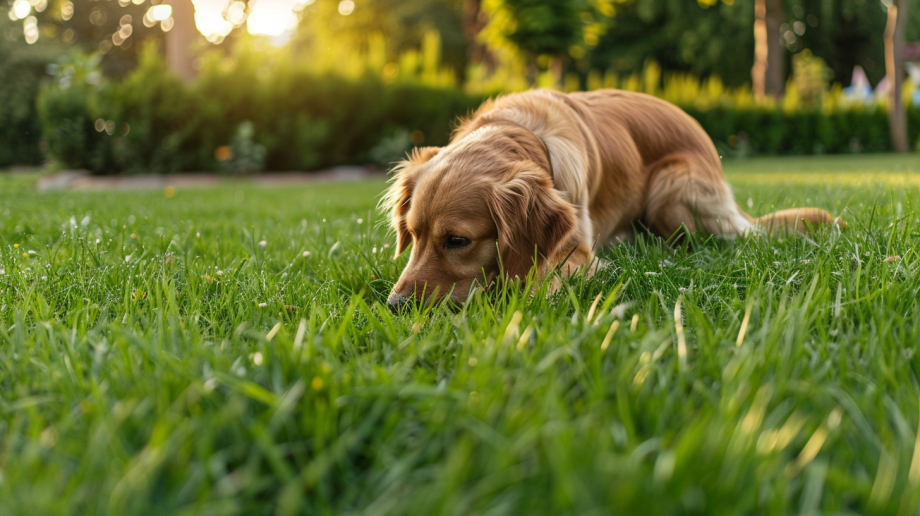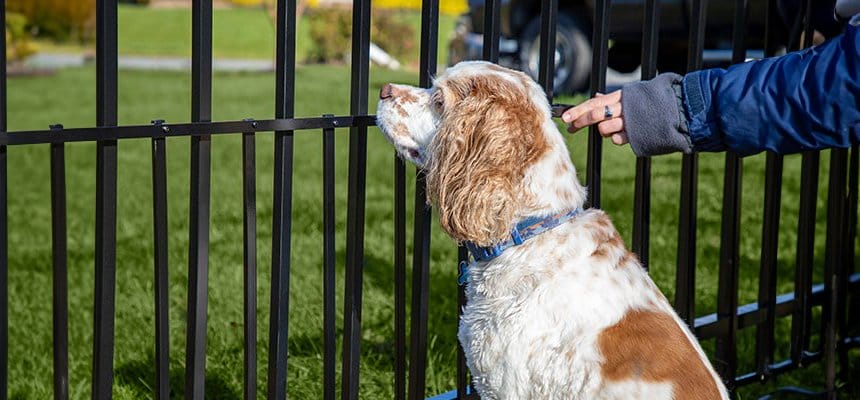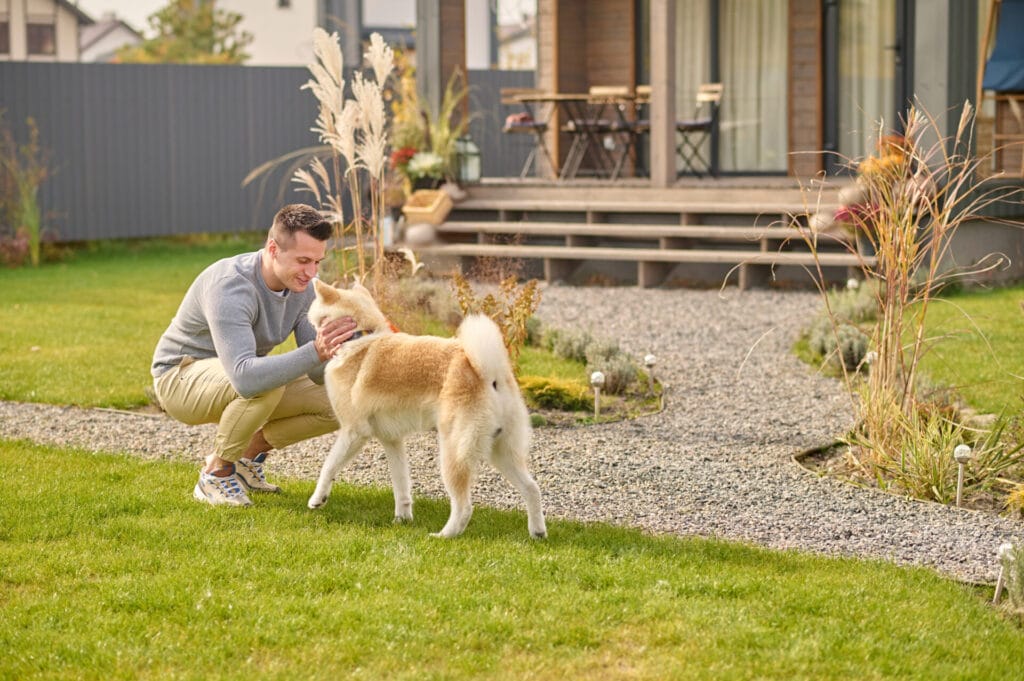Creating a beautiful yard that caters to both your personal aesthetic and your pet’s needs is the dream of every dog owner. Whether you have a playful puppy or a senior dog, your garden or yard should be a place where both you and your dog can relax, play, and explore safely. However, designing a pet-friendly landscape involves a bit more than just throwing down a few plants or setting up a doghouse. With the right pet-friendly landscaping ideas, you can make sure your yard is both dog-friendly and visually appealing.
In this blog post, we’ll dive into practical, stylish, and dog-safe landscaping ideas that can transform your outdoor space into a pet paradise. From durable grass alternatives to safe plants for dogs, we’ve got you covered.


The first step in creating a dog-friendly garden is selecting the right plants. Many common garden plants can be harmful to dogs, including lilies, azaleas, and certain types of ivy. To ensure your pet’s safety, opt for plants that are non-toxic and safe for dogs. Here are a few dog-safe plants to consider:
Sunflowers: Bright and cheerful, sunflowers are safe for dogs and easy to grow.
Marigolds: These vibrant flowers are non-toxic to dogs and can add a pop of color to your garden.
Lavender: Not only does lavender smell wonderful, but it’s also dog-friendly.
Petunias: These annual flowers are safe and come in a variety of colors.
Avoid plants like oleander, sago palm, and daffodils, which are highly toxic to dogs. Make sure to do your research on any plant you add to your garden to ensure it’s safe for your furry friends.
One of the biggest challenges for dog owners is maintaining a healthy lawn while accommodating their dog’s playfulness. Dogs love to dig, run, and roll in the grass, which can lead to bare spots and muddy patches. Luckily, there are grass alternatives that are both durable and pet-friendly.
Artificial Grass: This is an excellent option for dog owners who want a pristine lawn without the hassle of upkeep. Artificial grass is easy to clean, doesn’t get muddy, and is highly durable.
Clover Lawn: Clover is a great alternative to traditional grass. It’s tough, grows quickly, and is soft on your dog’s paws. Plus, clover doesn’t require as much water as regular grass.
Buffalo Grass: This hardy grass is drought-resistant and can withstand the rough play of active dogs.
When choosing a grass alternative, make sure it’s soft on your dog’s paws, doesn’t get too hot in the summer, and can handle some wear and tear.
Having a specific play area for your dog can help keep the rest of your garden intact. A designated dog play area provides your dog with a space where they can run, jump, and play freely without worrying about damaging your plants or garden decor.
Fencing: A sturdy, pet-friendly fence can keep your dog contained within the designated area. Choose a fence that is tall enough to prevent your dog from jumping over and safe enough to prevent any escapes.
Soft Surface: Consider adding pea gravel, rubber mulch, or a pet-friendly turf to create a soft surface for your dog to play on. These materials are comfortable for dogs, and they drain well to prevent mud.
Obstacles and Toys: Add some fun obstacles, like tunnels, ramps, or dog-friendly play equipment, to keep your dog entertained.
A designated play area gives your dog the freedom to enjoy outdoor activities while protecting the rest of your yard from any potential damage.
Dogs can easily get overheated when playing outside, especially during the summer months. It’s essential to provide shaded areas and plenty of fresh water to keep your pet comfortable and hydrated.
Shade Structures: Install a gazebo, pergola, or shaded dog house where your dog can rest and cool off. If your dog loves to lay in the sun, make sure there are shaded spots available throughout the yard.
Water Stations: Set up water bowls in multiple locations, especially near play areas and shaded spots. You can also invest in a pet-friendly water fountain that automatically refills to ensure your dog has constant access to fresh water.
Incorporating shade and water stations into your pet-friendly landscape helps ensure your dog stays safe and comfortable, even on the hottest days.
If you’re looking for a more natural look, you can use plants to create boundaries for your pet-friendly yard. This allows you to define areas like the dog play zone, garden beds, or pathways while still keeping a natural aesthetic.
Hedges and Shrubs: Dense shrubs and hedges can act as natural fences. They’re not only effective at creating boundaries but also offer privacy and shade for both you and your dog.
Climbing Vines: Consider growing climbing vines like jasmine or honeysuckle along fences or trellises to create a natural barrier. These plants add beauty and function to your yard while keeping your dog in the designated area.
Natural fencing options allow you to create a dog-friendly environment while maintaining an attractive and serene landscape.
Many dogs love to dig, which can often lead to damage in your garden. If your dog has a tendency to dig, consider creating a designated digging pit in a corner of your yard. You can fill the pit with sand or loose soil to give your dog a spot to satisfy their digging instincts. Over time, your dog will learn that this is the only place they’re allowed to dig, keeping the rest of your garden intact.
Conclusion
Designing a pet-friendly yard requires a balance between functionality and aesthetics. By incorporating dog-safe plants, durable grass alternatives, and dedicated play areas, you can create a yard that both you and your dog will love. Always keep your dog’s safety in mind when selecting materials and plants, and make sure to provide plenty of shade, water, and opportunities for play. With these pet-friendly landscaping ideas, your yard will become a haven for both you and your furry companion.


